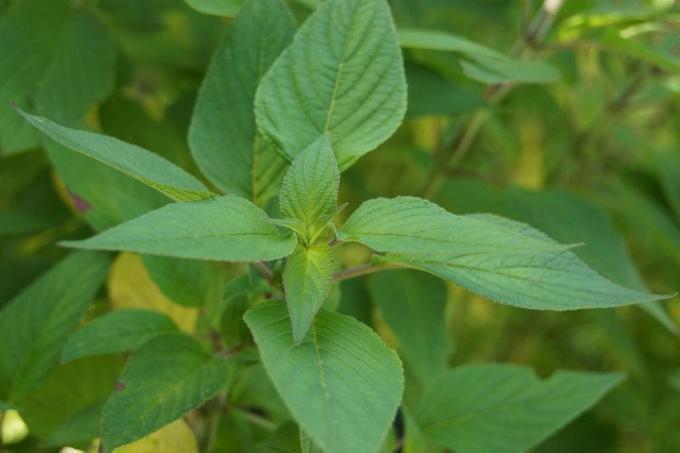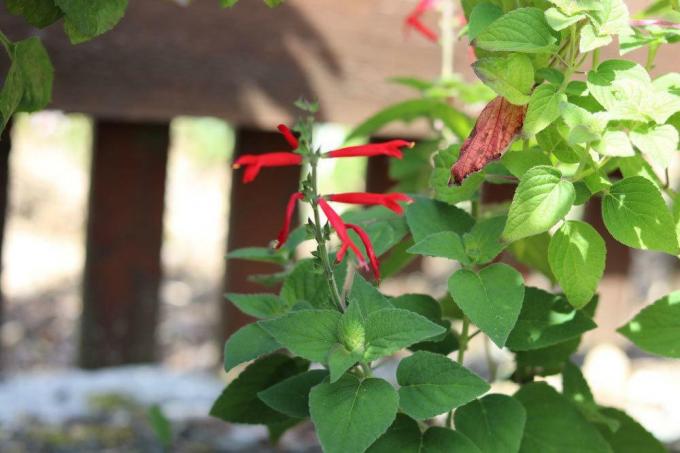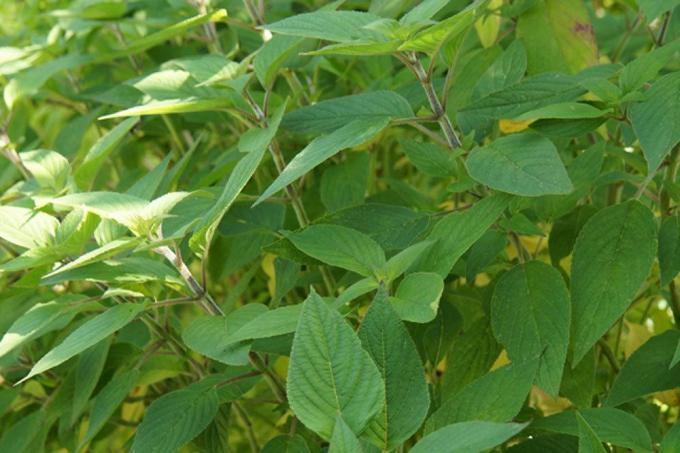
table of contents
- Pineapple sage is not hardy
- Winter in the house
- Instructions for wintering in the house
- Conditions in winter quarters
- Steps before wintering
- Repot
- Cut
- Wintering outdoors
- If a frost-free wintering is not possible
- Instructions for wintering in a bed
Pineapple sage (Salvia elegans) and (Salvia rutilans) is a particularly aromatic and also very decorative herb. When touched, its leaves give off a delicate, fruity scent. Its edible, crimson red flowers appear in summer or at a more unusual time in October / November, depending on the variety, and provide a splendid splash of color in the autumn garden. However, this sage is not winter hardy and is therefore mainly cultivated in pots. It should overwinter as frost-free as possible.
Pineapple sage is not hardy
There is both the large pineapple sage (Salvia rutilans) and the small one (Salvia elegans), also known as honeydew melon sage.
- The difference between the two varieties lies in the height of growth and the flowering time
- Salvia rutilans reaches heights of growth of 80-150 cm and flowers in late autumn
- Salvia elegans grows up to 60 cm in height and blooms in summer
- This perennial culinary herb, basically very robust but not hardy
- These plants, which originate from Mexico and Guatemala, have a very low frost tolerance
In very mild locations, you can venture out to winter if necessary, but this is associated with a great risk. In addition to the region, particular attention must be paid to choosing the right location and good winter protection. To be on the safe side, use pineapple sage only in a pot or bucket cultivate it and bring it over the winter in a frost-free area. In addition, one remains flexible with a bucket culture if the site conditions are not ideal. However, this plant does not like moving too often.

Winter in the house
Instructions for wintering in the house
The overwintering of Salvia elegans and Salvia rutilans in the bucket is the simplest and most promising way to bring these plants through the cold season without damage. This only takes a few steps.
- Bring the pineapple sage to the winter quarters before the first frost
- As soon as temperatures approach freezing point
- Or fall permanently below 5 ° C
- If necessary, dig up planted specimens and plant them in pots
- Then overwinter frost-free like normal potted plants
- Don't forget to water after planting
If there is not enough space in the winter quarters, the plant can be cut back vigorously before moving. The best month for this is October. Otherwise, the cut takes place regularly in spring.
Conditions in winter quarters
Pineapple or honeydew sage that was not cut back before wintering needs bright, light-flooded but cool rooms for wintering. For this z. B. Conservatories, stairwells and basements with sufficient light or other bright and little heated rooms. Under these conditions, the sage usually stays green even in winter and can be harvested.
The temperatures should be between 5 ° C and 15 ° C. At temperatures of a maximum of 16 ° C and a lot of light, pineapple sage can occasionally develop flowers even in winter. The care of these plants is limited in winter and limited to very economical watering. However, the bale should not dry out completely at any time. You should completely avoid fertilizer during this time.
tip: If the sage was severely cut back in October, it can also overwinter cooler and darker.
Steps before wintering
Repot
If the pot is well rooted at the end of winter, it is a good idea to repot the plant before wintering. Spring is the best time to repot anyway.
- The new planter should be big enough
- A capacity of at least 10 liters is required
- First, carefully remove the honeydew sage from the old pot
- Then remove the loose soil and dead or damaged root parts
- To protect against waterlogging, drainage on the bottom of the pot is essential
- Should be made of coarse materials such as gravel or pottery shards
- Spread a conventional garden fleece on top
- On the fleece, a permeable and nutrient-rich substrate
- Ideally a mixture of clay, compost and sand in equal parts
Now the plant is used until it is filled with substrate a few centimeters below the edge of the pot, pressed on and watered well. As soon as frosts are no longer to be expected, the plant can go outside again. A warm and partially shaded place is suitable for this, preferably with sun in the morning and in the evening. Avoid locations with blazing midday sun. If there was no pruning before wintering, it should be done now.

Cut
Pineapple or honeydew melon sage is a very vigorous and pruning plant. Because a regular pruning is definitely recommended for this plant. However, it should be done before budding, i.e. in early spring. It is best to cut them back to a hand's breadth above the ground. You should not cut into the old wood. This cut leads to the fact that the plant grows back more compact and more densely branched and also maintains or increases its ability to flower. is promoted.
Wintering outdoors
If a frost-free wintering is not possible
If no suitable winter quarters are available, pineapple or honeydew sage must inevitably hibernate outdoors in the bucket. To make wintering easier for him, he should be cut back vigorously around October. Then you put the bucket in a sheltered place, preferably in front of a warm house wall facing south. To protect against frost on the ground, place it a little higher on a wooden pallet, styrofoam plate or something similar.
So that the pot and thus also the bale do not freeze through, it is wrapped with garden fleece, jute, bubble wrap or other insulating materials. The root area is covered with dry leaves and straw. Extra brushwood cover can be helpful. As the temperature rises in spring, the cover is removed bit by bit. In no case should it be completely cleared away immediately. The cover can only be completely removed after the ice saints, around mid-May.
tip: If the root ball freezes through, this cold-sensitive plant can usually no longer be saved. Good protection is all the more important.
Instructions for wintering in a bed
Wintering in the bed is generally not recommended and in most cases it goes wrong. Nevertheless, wintering outdoors can work, of course only with appropriate protection and only in very mild locations such as. B. on the Lower Rhine.
- Both the roots and parts of the plant above ground require protection
- Cover the root area and remaining parts above the soil over a large area
- Fall leaves, straw or fleece are suitable as cover
- Additional coverage with brushwood makes sense
- Vigorous pruning of honeydew melon sage in autumn or Recommended October
- Pruning can increase the chances of surviving the winter outdoors
- Specimens that overwinter outside should also water in winter
- Only on frost-free days

If you water in frost, the water in the ducts of the plant can freeze and cause it to literally implode. If the above-ground parts of the plant come into contact with frozen water, the plant in question usually dies.
tip: If overwintering in the bed was actually successful and the plant sprouts again in spring, the cover should only be removed here gradually.



